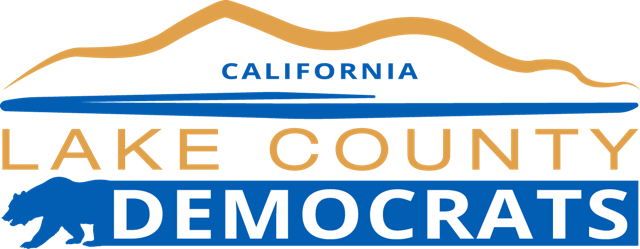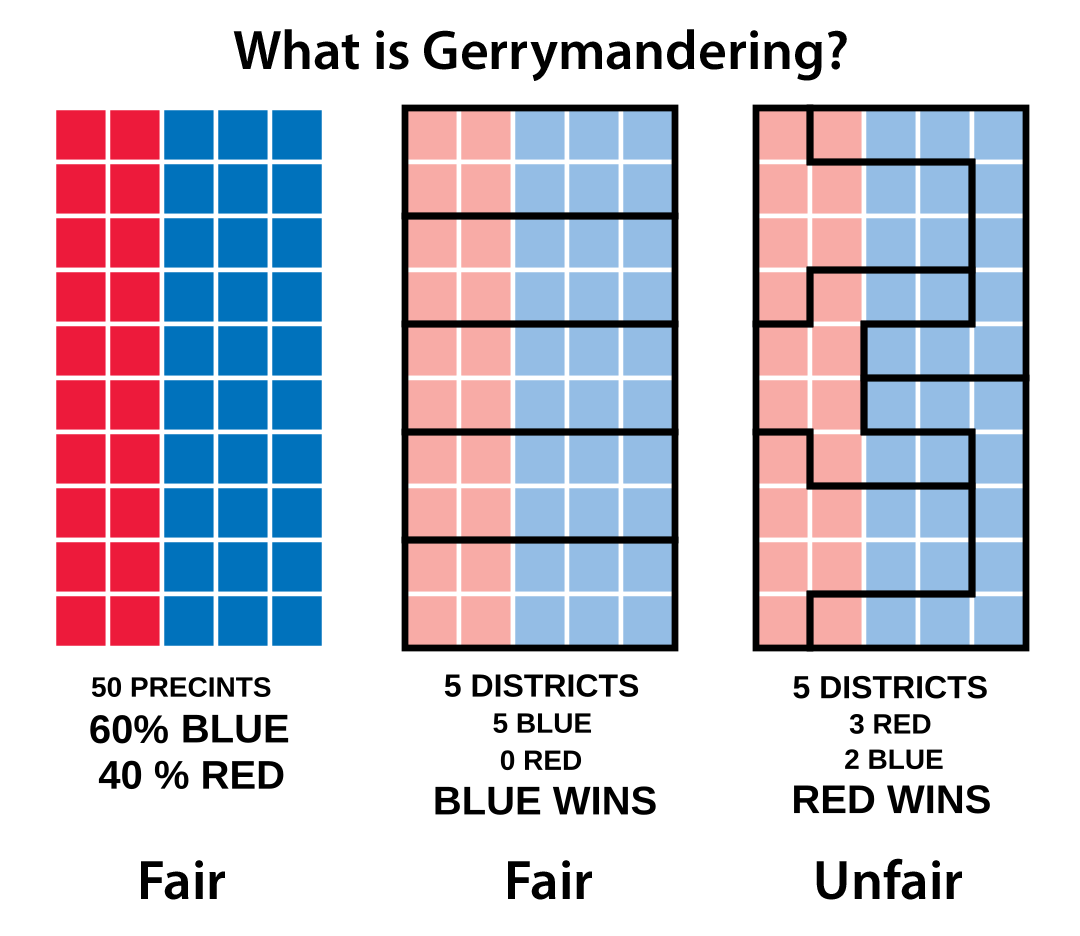Image: Steven Nass/Wikimedia
By adjusting the boundaries of electoral districts, political parties can gain votes and influence election outcomes dramatically.
This example shows a district that is 60 percent blue. Redrawing the boundaries in a gerrymandered fashion results in the red minority unfairly winning over the blue majority.
- The first panel shows an area in which 60% of registered voters
are Blue. - The second panel shows unbiased boundaries in the same area maintaining the 60% Blue majority.
- The third panel shows redrawn boundaries in the same area unfairly allowing the 40% Red minority to win the vote.
Gerrymandering is achieved through adjusting the boundaries of districts to achieve desired electoral outcomes such as diluting the voting power of a racial or ethnic group, protecting incumbents from losing their seats to challengers, or keeping one political party in power.
The term gerrymander refers to the strange boundary shapes. It was coined in 1812 by newspapers critical of then-governor of Massachusetts Elbridge Gerry, who signed a redistricting bill that benefited his party. One of the districts was said to be shaped like a salamander, and a political cartoon called it a “Gerry-mander.” * Source Caltech Magazine
Donald Trump and Texas Republicans are making an unprecedented power grab to steal congressional seats and rig the 2026 election before voting even begins.
Other Republican states are following suit. They want to steal enough seats to control Congress regardless of how the people vote.
If Californians don’t act now, Donald Trump will seize total power for two more years.
Learn more stopelectionrigging.com

